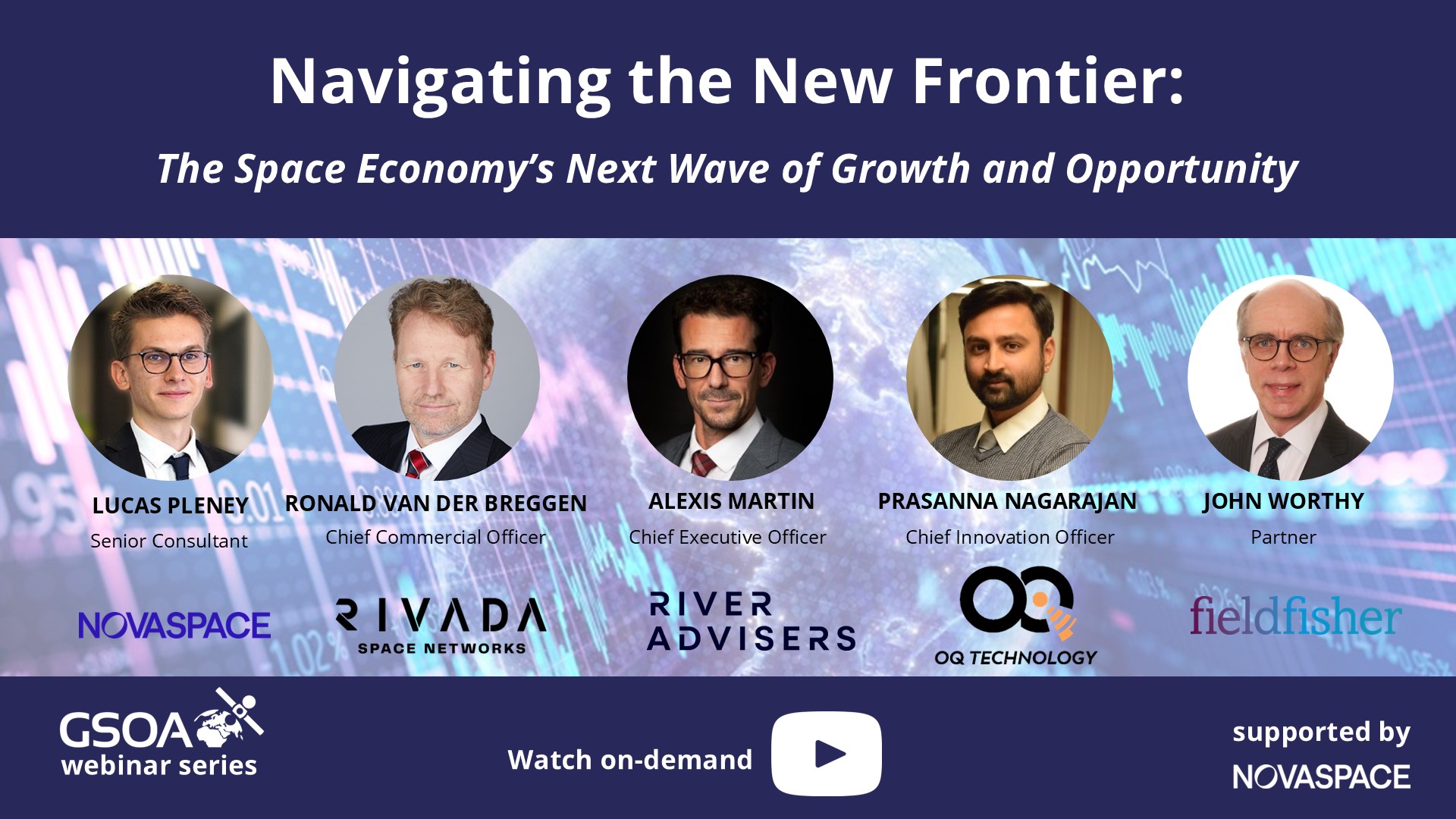🚀Navigating the New Frontier: The Space Economy’s Next Wave of Growth and Opportunity

The webinar brought together industry leaders to examine the fast-changing space economy – highlighting the latest trends, challenges, and what lies ahead for the satellite sector.
The session opened with a market overview from Novaspace, outlining the current $600 billion valuation of the space economy and its strong growth trajectory – expected to reach $945 billion by 2033. Much of this momentum is being driven by rising demand for satellite-enabled services across sectors.
Panellists explored major industry shifts, including the growing impact of vertical integration, which is redefining traditional value chains in satellite communications. They also addressed pressing regulatory issues such as spectrum allocation and licensing, while stressing the importance of sustainable growth strategies and investment readiness. A strong consensus emerged around the need for clear business models and collaborative partnerships to thrive in this complex, competitive environment.
If you missed the session, now is your chance to catch up on the key insights and actionable advice shared by industry experts.
Watch the full webinar video and download the Novaspace slides to gain a deeper understanding of the space economy’s future and how to position your organisation for success.
Read an extract from the latest Novaspace report on this topic, or purchase the ‘Space Economy Report’ with a discount using the code GSOA10.
Q & A continued….
Thank you to our audience for taking an active part by asking many questions. We ran out of time to respond to the questions below but our panellists were kind enough to answer after the event ended…
1. Why is the satellite industry so slow in responding to major disruptors in the industry. Is this complacency from legacy companies or just a lack of forward planning?
Lucas Pleney (Novaspace): The industry’s slow pace stems from a mix of structural and cultural factors. Long development cycles, regulatory constraints, and high capital requirements naturally lead to cautious decision-making. Established firms often prioritize reliability and risk management over rapid change. While this isn’t necessarily complacency, it does reflect an inertia, and the difficulty of adapting legacy systems to emerging technologies and business models.
2. It seems SpX and Blue (more so SpX) are the extreme examples of high revenue and valuation (including high financing and capital rounds) without a clear profit model. I believe Mr. Nagarajan mentioned this issue. High value individuals that self-fund businesses are not truly commercial companies. It skews the entire conversation about investments in the space sector. If you remove them from the conversation, and their impact on the sector (like cheaper launch prices) then you don’t really see that much growth compared to other sectors.
Lucas Pleney (Novaspace): SpaceX and Blue Origin are outliers in the space industry, thanks to their access to private capital – either from their founders or investors – which most companies don’t have. While they’re part of the industry and can’t be excluded from the picture, removing them would reveal a different, likely slower, growth story. Still, the demand they’re serving would largely exist anyway. That said, SpaceX has played a big role in making space more accessible by undercutting traditional launch prices. Interestingly, their own launch prices haven’t gone down – in fact, they’ve increased from about $55–60 million to $70 million for commercial missions.
3. Given the rapid growth and transformative shifts in the global space economy, particularly in areas like satellite communications, Earth Observation, and launch services, how can emerging space actors like Brazil leverage these trends to establish a competitive presence in the global market? Specifically, what strategic opportunities – such as regional collaborations, niche technological advancements, or policy incentives – should Brazil prioritize to attract capital investment and foster sustainable growth in its space sector? From an investor’s perspective, what factors would you evaluate when considering opportunities in an emerging market like Brazil, balancing its potential for innovation with the risks posed by geopolitical and economic uncertainties?
Lucas Pleney (Novaspace): To attract foreign investment, I’d focus on building ROI-driven downstream applications instead of capital-heavy upstream projects, which are harder to compete globally and often driven by politics rather than profit. Downstream solutions can support economic development and deliver quicker returns. Investors care about profitability – so that’s where the focus should be.
